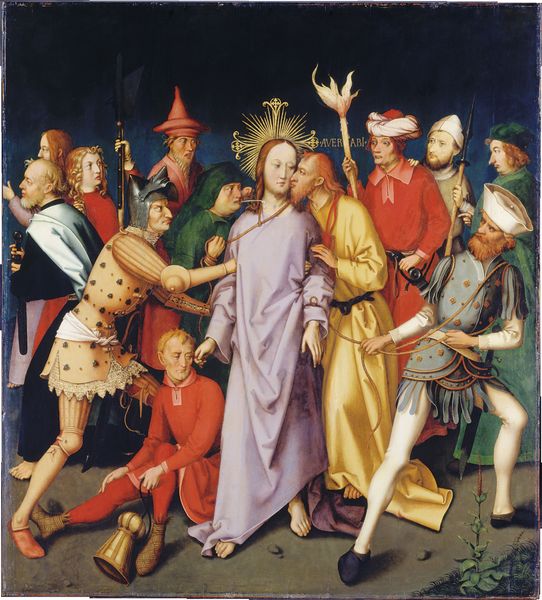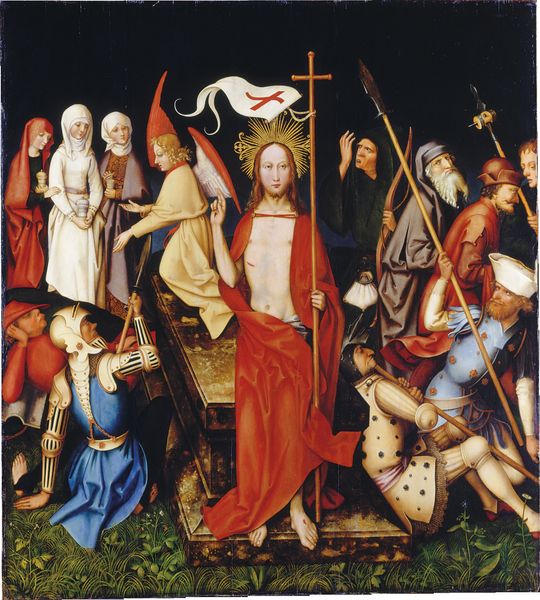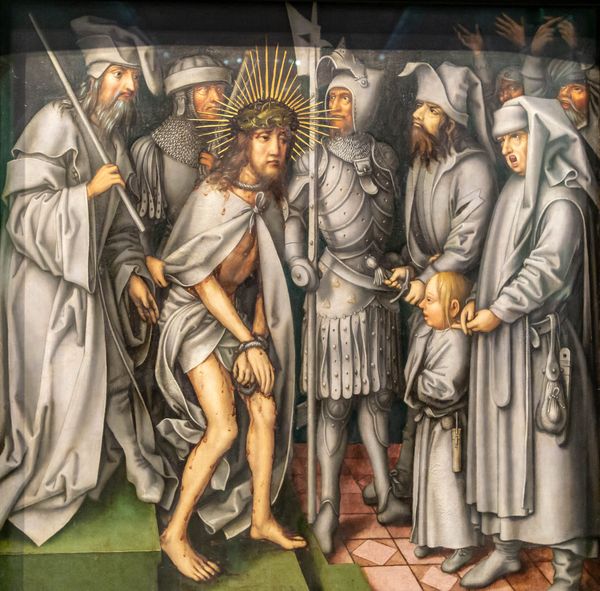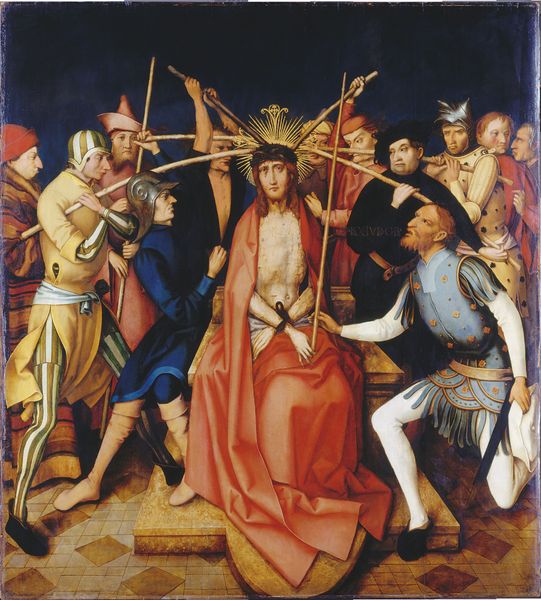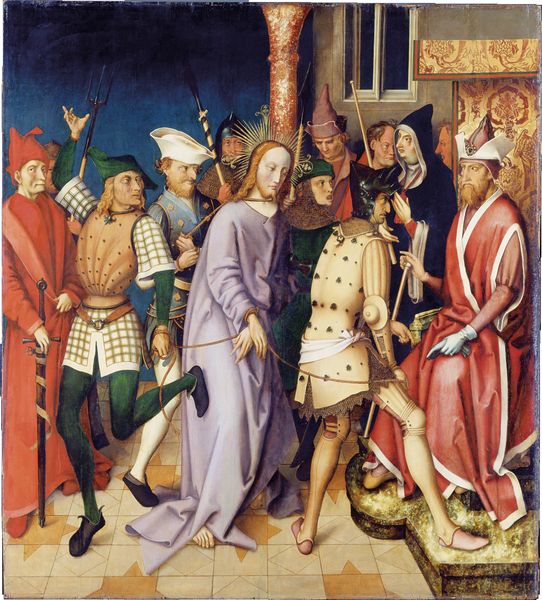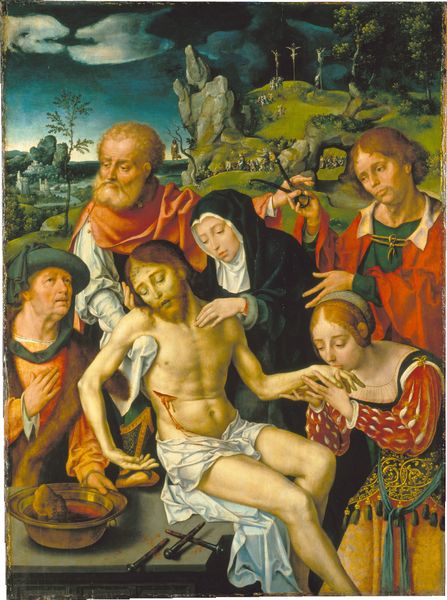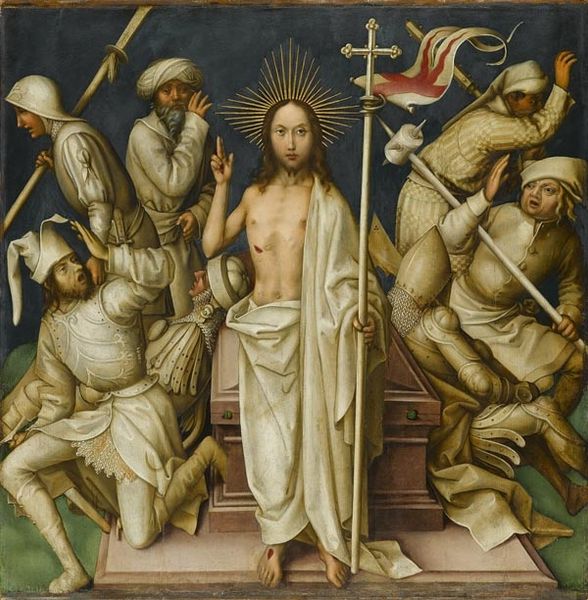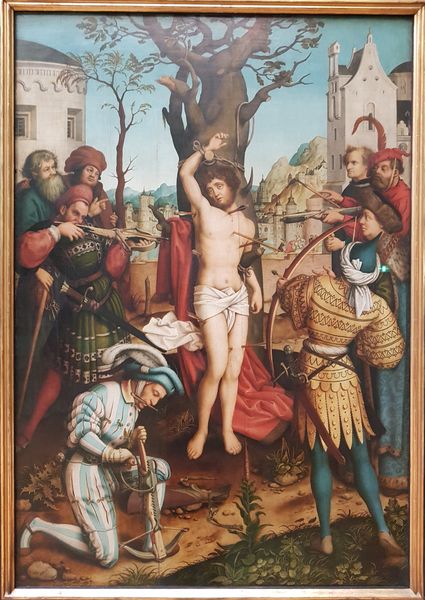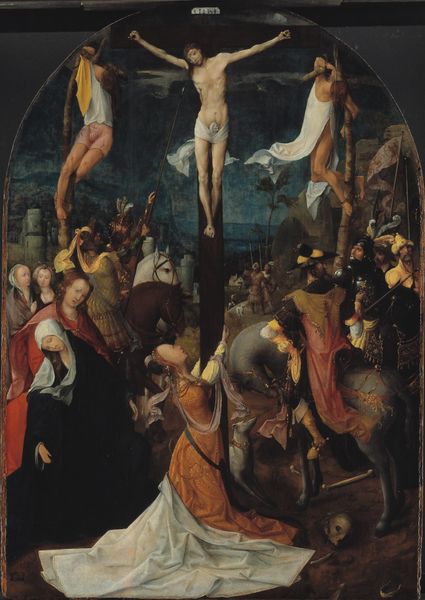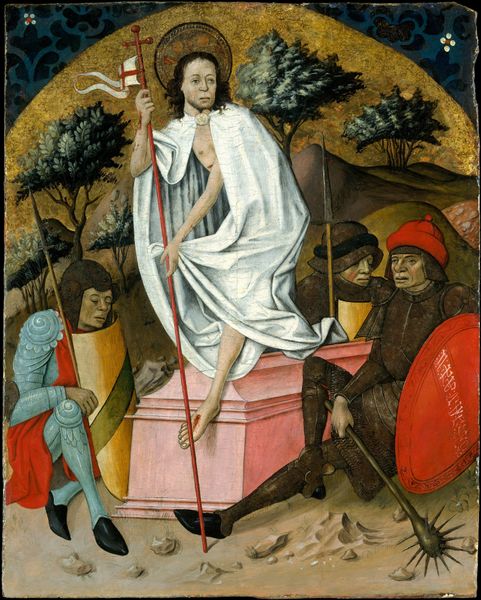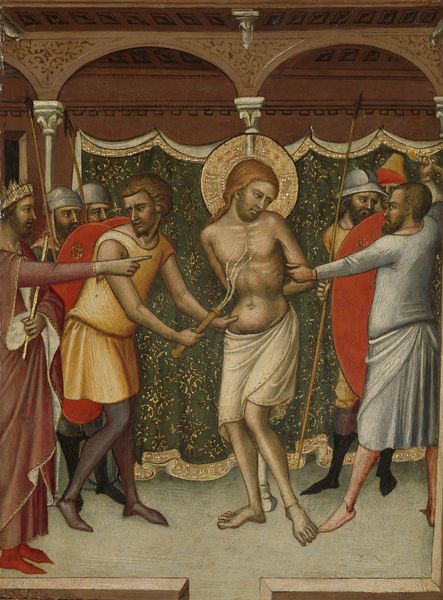
oil-paint, fresco
#
narrative-art
#
oil-paint
#
figuration
#
fresco
#
11_renaissance
#
oil painting
#
jesus-christ
#
13_16th-century
#
history-painting
#
italian-renaissance
Dimensions: 166.3 x 150.3 cm
Copyright: Public Domain
Curator: Well, immediately I'm struck by the spatial dynamics; that compressed foreground really pushes the viewer into a discomfiting proximity with the event. It's visually jarring. Editor: Indeed. Here we have Hans Holbein the Elder's "Flagellation," painted around 1501, currently residing in the Städel Museum. The depiction places us right amidst a public spectacle of legalised violence in that period. Curator: Precisely. Holbein employs this tightly-packed composition to almost force the viewer into the role of voyeur or, perhaps, a complicit bystander in this scene of brutalisation. Observe the textures – the rough garments, the whips, the smoothness of the marble pillar, contrasting brutally against the pale flesh of Christ. Editor: The theatrical attire is particularly noteworthy. Look at the varied costumes of Christ's tormentors. This serves a purpose of underlining that legal violence and injustice are inflicted not only by a mass mob but also by persons in uniform. Curator: There’s an unnerving ambiguity about their faces, too. Some leer, some seem indifferent, some seem almost… thoughtful. And then the cold palette heightens the overall impact. The use of muted colors gives an oppressive feeling, like a somber stain. Editor: Holbein likely intended for this to function as more than just a biblical representation. The location and setting seem oddly ambiguous. This would be intended as a critical social commentary reflecting the judicial corruption endemic during the artist’s life, with a universal relevance in its public moral function to show how authority acts within an imperfect system. Curator: You're absolutely right. Holbein masterfully uses visual symbolism – the broken brooms, the rigid lines and the stark composition – to critique the very structure of power itself. It is a work that stays with you, visually and conceptually. Editor: Yes, I think analysing Holbein's "Flagellation" forces us to reckon with questions of judgment, ethics, power, violence in social, political and artistic spheres – themes disturbingly timeless and permanently present within the artistic cannon.
Comments
Join the conversation
Join millions of artists and users on Artera today and experience the ultimate creative platform.

